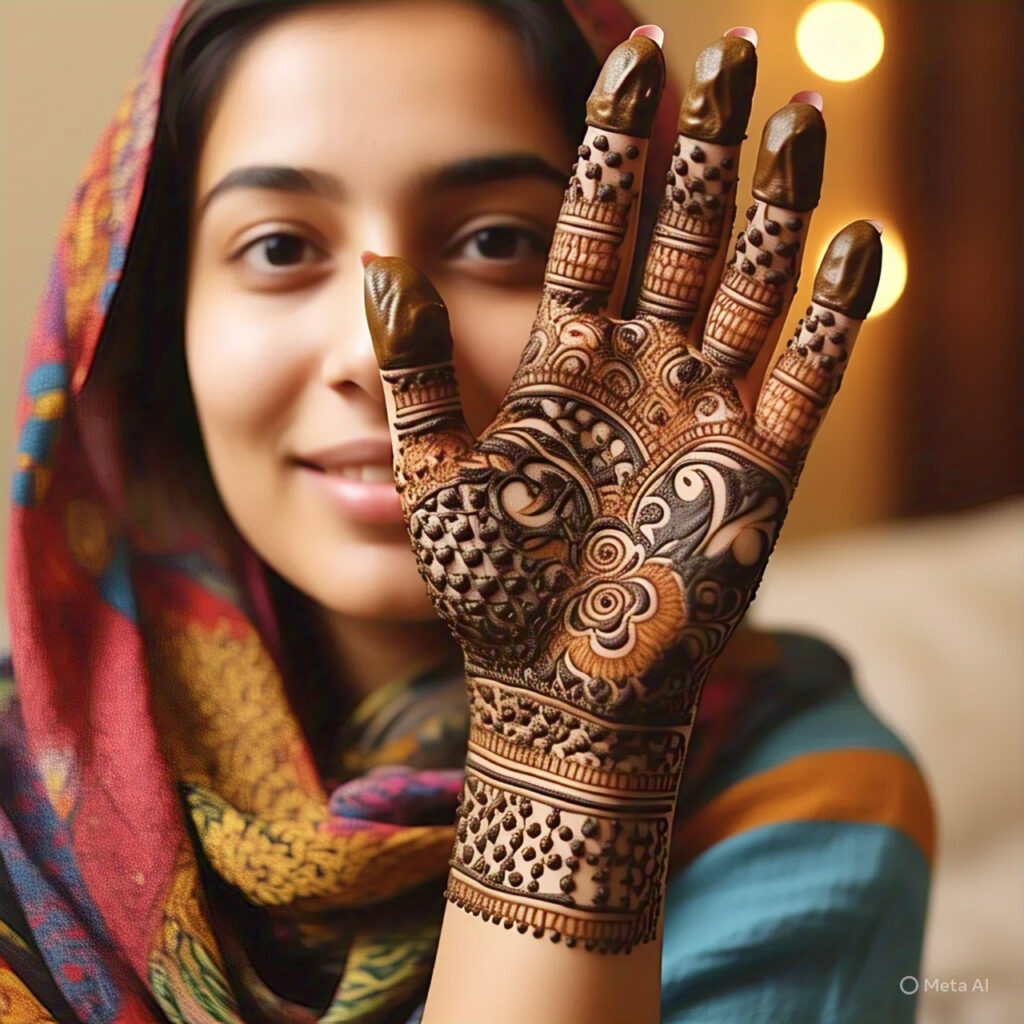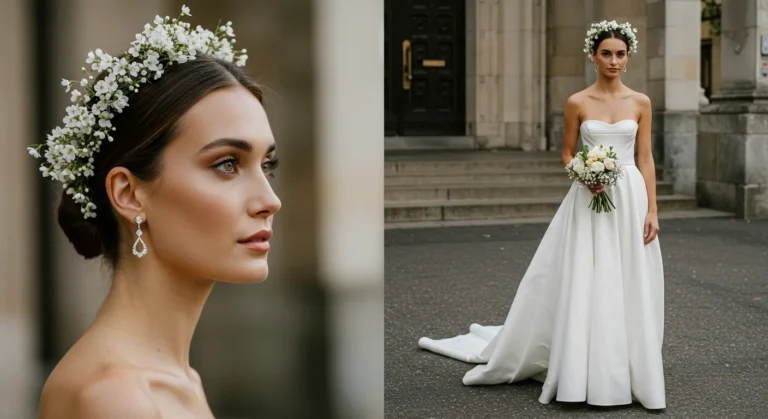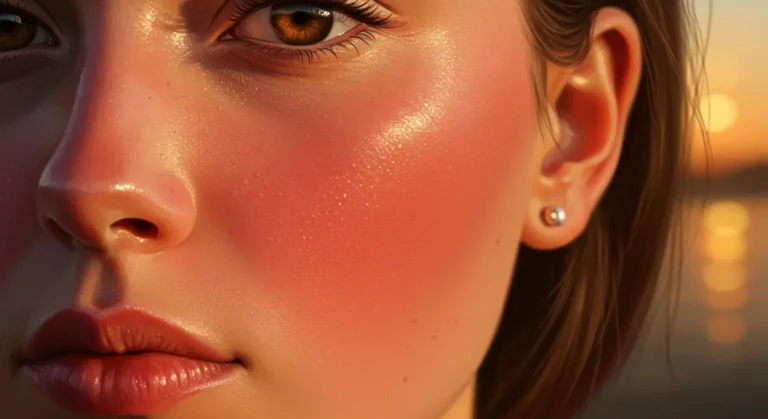Henna That Lasts: Secrets, Myths & Game-Changing Tips You Need to Know
Introduction to Henna and Its Popularity
Henna has been used for centuries in various cultures, predominantly in parts of South Asia, the Middle East, and North Africa. This natural dye, derived from the Lawsonia inermis plant, is commonly applied to the skin and hair. Whether it’s for intricate body art or a temporary hair color change,its offers a safe and beautiful alternative to more permanent options.
In recent years, tattoos have gained popularity worldwide due to their striking designs and the non-permanent nature of the stain. People often seek henna tattoos for special occasions like weddings or festivals, appreciating both the symbolism and the artistic value behind the intricate patterns. The appeal of henna lies in its versatility—each design is unique and can be customized to suit personal tastes, whether it’s a delicate floral pattern or bold, geometric shapes.
But what makes even more fascinating is its temporary nature. Unlike permanent tattoos, naturally fade over time, leaving users with the freedom to experiment with different designs without any long-term commitment. This section will delve deeper into how long lasts on the skin, along with factors that influence its longevity. By understanding these elements, you can enjoy the beauty of without worrying about how long it will stay.
Whether you’re curious about how to make last longer or want to learn more about its fading process, this guide will provide you with all the essential information. We’ll also touch on aftercare tips to ensure your henna tattoo stays vibrant for as long as possible. So, let’s dive in and explore everything you need to know about henna and its lasting power!

How Long Does Henna Last?
its tattoos are known for their beautiful, temporary nature, but how long do they really last? On average, henna tattoos can last anywhere from 1 to 3 weeks, depending on various factors. While the stain initially appears vibrant, it gradually fades over time due to the natural exfoliation of your skin. This fading process, however, can be influenced by several key factors that are essential to consider.
Factors Affecting Henna Longevity
- Skin Type: Your skin type plays a major role in how long lasts. If you have oily skin, you may find that henna fades faster, as oil can break down the stain more quickly. Dry skin, on the other hand, tends to hold onto the stain longer. For individuals with dry skin, it may last closer to the three-week mark.
- Location of the Tattoo: The area where you apply the also matters. it applied to areas with thicker skin, such as the palms or soles of the feet, tends to last longer. These areas don’t shed skin as frequently, allowing the stain to remain intact. In contrast, it applied to areas like the fingers, inner wrists, or other spots that experience frequent movement or friction will fade faster.
- Exposure to Water and Sun: Water exposure can significantly shorten the lifespan of design. If you wash your hands frequently or expose your tattoo to water soon after application, the stain will start to fade more quickly. Similarly, exposure to direct sunlight or excessive sweating can cause the mehndi to fade faster. It’s best to avoid water for the first 12-24 hours after the application to allow the stain to set properly.
- Quality of Henna: Not all henna is created equal. The quality of the paste you use will directly affect how long the stain lasts. High-quality, natural tends to produce a rich, long-lasting stain, while lower-quality or with added chemicals may result in a lighter, shorter-lasting color.
- Aftercare: Proper aftercare can help prolong the life of your mehndi tattoo. Keeping the tattoo moisturized and avoiding harsh chemicals can keep the stain from fading prematurely. Applying natural oils like coconut oil or olive oil after the initial 24-hour period can also help the stain remain darker for a longer time.

Duration on Hair
When it comes to using as a hair dye, the duration of the color depends on the texture and condition of your hair. hair dye typically lasts about 4 to 6 weeks, but the exact duration can vary. Just like with skin tattoos, hair that is frequently washed or exposed to harsh conditions may experience quicker fading.
For people with dry or coarse hair, the color may last longer than for individuals with oily or fine hair. Additionally, if you use mehndi on bleached or chemically treated hair, the results may differ. It’s important to note that is a natural dye, so it works by coating the hair shaft, which means the color will gradually fade over time as your hair grows and as it gets washed.
Why Does Henna Fade?
A temporary stain, naturally fades over time, but why does this happen? The fading process is an inherent characteristic of tattoos, which is influenced by several key factors. Understanding why tattos fades can help you manage expectations and make informed decisions when it comes to the longevity of your body art.
The Natural Exfoliation Process
One of the primary reasons fades is due to the natural process of skin exfoliation. Your skin sheds dead cells, and as new cells come to the surface, the stain gradually fades. The rate of exfoliation varies from person to person, with individuals who have oily or sensitive skin experiencing faster skin cell turnover. This results in a quicker fade for henna tattoos. On the other hand, people with drier skin may notice the lasts longer, as their skin tends to shed more slowly.
Sun Exposure and Environmental Factors
Exposure to sunlight is another major factor that accelerates the fading of mehndi tattoos. UV rays from the sun can break down the natural pigment in henna, causing it to lose its intensity. The more you expose your tattoo to the sun, the faster the stain will begin to fade. Additionally, other environmental factors like excessive sweating, wind, or cold weather can also contribute to the fading process by causing the skin to dry out or shed more rapidly.
Water and Friction
Water, especially hot water, is another culprit in the fading of tattoos. stains are water-soluble, which means prolonged exposure to water can dilute the pigment and speed up the fading process. Frequent washing or activities like swimming can cause the to fade more quickly. Additionally, areas that experience more friction—such as your hands, feet, or wrists—will see the stain fade faster due to the constant movement and rubbing of the skin.
Quality of Henna Paste
The quality of the tattos paste also plays a significant role in how long the stain lasts. High-quality, pure mehndi made from the Lawsonia inermis plant produces a deeper, more vibrant stain that lasts longer. On the other hand, that contains chemicals or synthetic additives may result in a lighter stain that fades faster. Always choose natural from reputable sources to ensure better longevity and skin safety.
Skin Type and Aftercare
As mentioned earlier, different skin types can affect how long lasts. People with oily skin may notice that their tattoos fade faster, while those with dry skin may find that the stain lasts a little longer. Proper aftercare is key to prolonging the stain. Avoiding soap, hot water, and excessive moisture in the first 24-48 hours after applying mehndi can help the stain set and last longer. Once the stain is set, regular moisturizing with natural oils, such as coconut or olive oil, can help maintain the color.

How to Make Henna Last Longer on Skin
While tattoos are beautiful and temporary, there are several ways you can prolong their lifespan. By following the right aftercare steps, you can help ensure that your tattoo stays vibrant for as long as possible. Here are some effective tips on how to make your tattoo last longer on your skin:
1. Avoid Water for the First 24-48 Hours
After applying tattos, it’s crucial to avoid getting your tattoo wet for the first 12-24 hours. Water can cause the stain to fade prematurely, so refrain from activities like swimming, washing your hands frequently, or taking long showers. During this time, the mehndi stain is still setting, and exposure to water can dilute the color and reduce its intensity. If you do need to clean the area, use a damp cloth to gently blot it, rather than soaking it in water.
2. Keep the Henna Dry After Application
The first few hours after application are critical. Keep the area as dry as possible, and avoid sweating or exposing the tattoo to steam, especially from showers or saunas. Moisture can break down the pigment, causing it to fade faster. Try to avoid activities like vigorous exercise or anything that could cause you to sweat heavily. If you live in a humid climate, use a fan to help keep the tattoo dry.
3. Use Natural Oils to Preserve the Stain
Once the has dried and set (after about 24 hours), you can apply natural oils, such as coconut oil, olive oil, or mustard oil, to help lock in the color and keep the skin hydrated. These oils provide nourishment to the skin and protect the from fading due to dryness or external elements. Gently massage the oil into the tattooed area every day, especially if you’re washing the area regularly.
4. Avoid Scrubbing or Exfoliating the Area
To keep your tattoo looking fresh for as long as possible, avoid scrubbing or exfoliating the area. Harsh exfoliants or scrubbing can cause the to fade quickly by removing dead skin cells, which speeds up the fading process. Use gentle moisturizers and avoid products with harsh chemicals that could irritate your skin or cause the tattoo to fade.
5. Apply a Protective Layer for Extra Care
If you want to keep your tattos stain vibrant and protected from daily wear and tear, you can apply a thin layer of petroleum jelly or a barrier cream over the tattoo. This will help shield the tattoo from moisture and friction. It can also help in areas that are more prone to fading, like the fingers or wrists, where constant movement and contact with clothing may cause the color to lighten.
6. Avoid Sun Exposure
Excessive sun exposure can cause tattoos to fade quickly. UV rays can break down the pigments in the mehndi, causing the stain to lose its vibrancy faster. If you plan to be outdoors, cover the tattooed area with clothing or sunscreen to protect it from the sun. Alternatively, stay in shaded areas or limit your time in direct sunlight.
7. Choose High-Quality Henna Paste
The longevity of your tattoo is also heavily dependent on the quality of the paste. Always choose natural, chemical-free to ensure a rich, deep stain that lasts longer. Lower-quality products may contain additives or artificial dyes, which can result in a lighter, shorter-lasting color.
Pros and Cons of Henna Tattoos
its tattoos have become a popular form of body art, but like anything, they come with their own set of advantages and disadvantages. Here’s a breakdown to help you decide if tattoos are right for you:
Pros of Henna Tattoos
- Temporary and Non-Permanent: tattoos are temporary, lasting between 1 to 3 weeks. This makes them ideal for people who enjoy changing their body art frequently or are not ready for a permanent tattoo commitment.
- Natural and Safe: Pure, natural mehndi is made from plant-based ingredients, making it a safer option compared to chemical-based dyes or permanent tattoos. its tattoos are generally considered safe for most skin types and are less likely to cause allergic reactions.
- Customization: its tattoos can be completely customized, offering endless design possibilities. From intricate traditional patterns to modern and minimalistic designs, you can express yourself in a unique way.
- Cultural Significance: it has deep cultural significance, particularly in countries like India, Morocco, and Egypt. Using tattos for special events like weddings or festivals can connect you to these rich traditions.
- Pain-Free Application: Unlike traditional tattoos, tattoos are applied with a paste and do not require needles, which means there is no pain involved during the process.
- Low Maintenance: After the initial application, its tattoos are relatively low-maintenance. They don’t require much care beyond avoiding water during the first 24-48 hours.
Cons of Henna Tattoos
- Short-Term: While temporary tattoos are a pro for many, it can also be a con. If you love your tattos design, you’ll need to reapply it after a few weeks, making it less ideal for people who want a long-lasting tattoo.
- Potential for Skin Sensitivity: Although it is generally safe, some individuals may have sensitive skin or allergies. It’s important to do a patch test before applying mehndi to larger areas to ensure there are no adverse reactions.
- Quality Variability: Not all is created equal. Some tattos products contain artificial chemicals, which can affect the quality and longevity of the tattoo. Always ensure you’re using high-quality, natural henna to avoid potential issues.
- Messy Application: The application process can be a bit messy, and it may take time for the dry. You need to be careful not to smudge the design while it’s still wet, as this can ruin the artwork.
- Limited Color Choices: Traditional henna provides a reddish-brown stain, which may not suit everyone’s preferences. While there are colored products, these can sometimes be less effective or contain chemicals.
- Fading and Unevenness: its fades gradually as your skin sheds, and areas with more friction (like the hands or feet) tend to fade faster. The natural exfoliation process may result in uneven fading, which could affect the design’s appearance.
How to Remove Henna Safely
While henna tattoos are meant to be temporary, there may come a time when you want to remove them sooner. Unlike permanent tattoos, henna fades over time, but if you need to speed up the process, it’s important to do so safely. Here’s how you can remove henna without harming your skin:
1. Exfoliation
Exfoliating the tattooed area is one of the most effective ways to remove henna. Gently scrub the skin with a mild exfoliant or a homemade sugar scrub. This helps remove the top layer of skin where the henna stain resides. Use circular motions to avoid irritating your skin, and apply gentle pressure. Exfoliation speeds up the natural shedding process, helping to fade the tattoo more quickly.
2. Use Baking Soda and Lemon Juice
A popular DIY remedy for removing henna involves a paste made from baking soda and lemon juice. Baking soda has mild abrasive properties, while lemon juice’s acidity helps lighten the stain. Mix the two ingredients into a thick paste and apply it to the henna tattoo. Leave it on for about 10-15 minutes, then gently scrub the area with a washcloth. This method can lighten the stain over time, but be cautious if you have sensitive skin, as lemon juice can sometimes cause irritation.
3. Olive Oil or Coconut Oil
Both olive oil and coconut oil are excellent natural options for gradually removing henna. These oils help to loosen the henna stain and keep the skin moisturized while removing it. Apply a small amount of oil to the tattooed area and massage it in for several minutes. Use a soft cloth or cotton pad to wipe away the oil and any henna remnants. Repeating this process daily can help fade the tattoo over time without causing damage to your skin.
4. Use a Henna Removal Product
There are also specialized henna removal products available on the market. These products are designed to gently break down the henna stain without irritating the skin. Follow the instructions on the product for best results, and be sure to patch-test first if you have sensitive skin.
5. Let Time Do Its Work
If you’re not in a hurry to remove your henna tattoo, the safest and most natural way is to simply let time take its course. Henna tattoos will naturally fade as your skin sheds dead skin cells. The tattoo will gradually lighten over a period of 1-3 weeks, depending on how quickly your skin exfoliates.
Frequently Asked Questions (FAQs)
1. How long does a henna tattoo last on the skin?
Henna tattoos typically last anywhere from 1 to 3 weeks, depending on factors like skin type, aftercare, and exposure to the elements.
2. Can I get a henna tattoo while pregnant?
Yes, henna tattoos are generally safe during pregnancy as long as the henna is natural and free from harmful chemicals. Always consult with your healthcare provider before getting a henna tattoo if you have concerns.
3. Does henna stain clothing?
Henna can stain clothing, especially while the paste is still wet. It’s a good idea to wear old clothing or cover the area with a cloth until the paste has dried and is ready to be removed.
4. How do I make henna darker and last longer?
To make your henna tattoo darker and last longer, avoid water for the first 24-48 hours, use natural oils to moisturize the tattooed area, and avoid sun exposure and harsh scrubbing.
5. Can I use henna on sensitive skin?
While henna is generally safe, some people with sensitive skin may experience an allergic reaction. Always perform a patch test before applying henna to larger areas of your skin.
6. What should I do if I have an allergic reaction to henna?
If you experience any redness, itching, or irritation after applying henna, wash the area immediately with soap and water. If symptoms persist, consult a dermatologist for further advice.
7. How do I remove henna tattoos safely?
You can remove henna by exfoliating the tattooed area, using natural oils like olive or coconut oil, or applying a paste of baking soda and lemon juice. Avoid harsh chemicals to protect your skin.
Henna Tattoo Trends in 2025
As the world of body art continues to evolve, henna tattoos have gained increasing popularity due to their cultural significance and versatility. In 2025, several exciting trends have emerged in the henna tattoo scene. These trends not only reflect creativity but also reflect a shift towards personalization and sustainability in body art. Let’s explore some of the most prominent henna tattoo trends that are set to define this year:
1. Minimalist Henna Designs
While traditional henna tattoos are often intricate and full of details, minimalist henna designs are becoming more popular. These tattoos feature simple, geometric patterns, delicate lines, and subtle accents. The clean and modern look of minimalist henna tattoos is perfect for those who prefer a more understated approach to body art. Think thin, delicate lines with an emphasis on symmetry, creating a refined yet meaningful design.
2. Henna for Self-Expression and Personalization
Personalized henna tattoos are becoming a top trend, with people seeking to create designs that reflect their unique experiences, values, or beliefs. This could include names, symbols, or meaningful quotes that tell a personal story. Custom henna tattoos are now more accessible, as artists can create bespoke designs based on a client’s preferences and inspiration. This trend ties into the broader movement toward self-expression in tattoo culture, allowing individuals to wear something truly one-of-a-kind.
3. Bold and Vibrant Henna Colors
Traditionally, henna stains skin with a reddish-brown color, but today’s henna artists are exploring a wider range of shades. Vibrant colors such as deep indigo, black, and even shades of white and gold are being used to create unique, eye-catching designs. Colored henna tattoos can add an extra layer of depth and personality to your body art, making it stand out more vividly against your skin tone.
4. Temporary Henna Tattoos with Long-Lasting Appeal
While henna tattoos are known for being temporary, some people want the illusion of a permanent design without the commitment. In response, there has been an increase in interest in temporary henna tattoos that last longer than the traditional few weeks. These tattoos may use a special blend of henna or modified formulas that result in longer-lasting designs, offering an extended opportunity to enjoy the artwork before it fades.
5. Eco-Friendly Henna Tattoos
Sustainability is a growing concern in all areas of life, and henna tattoo artists are increasingly offering eco-friendly options. This includes using natural, organic henna pastes, avoiding artificial colors or chemicals, and supporting practices that are kind to the environment. Eco-conscious consumers are gravitating towards these products because they align with values of ethical beauty and sustainability.
6. Henna with Modern Influences
Many henna artists are blending traditional henna techniques with modern elements. Popular influences include tattoos inspired by western art styles such as mandalas, abstract art, and even pop culture. This fusion of old and new results in stunningly unique designs that appeal to a wide range of aesthetic preferences.
7. Temporary Henna Tattoo Stickers
For those who want the look of henna without the application process, henna-inspired temporary tattoo stickers are gaining traction. These stickers mimic the appearance of real henna tattoos and can be applied and removed easily. They are perfect for people who want to experiment with henna designs or want a hassle-free option for a special event.
Conclusion
Henna tattoos continue to evolve in 2025, reflecting the increasing desire for personalization, sustainability, and creativity. Whether you’re opting for minimalist designs, vibrant colors, or eco-friendly options, henna remains a popular and versatile form of body art. These trends provide new ways to express individuality, connect with culture, and add an extra layer of style to any occasion.







